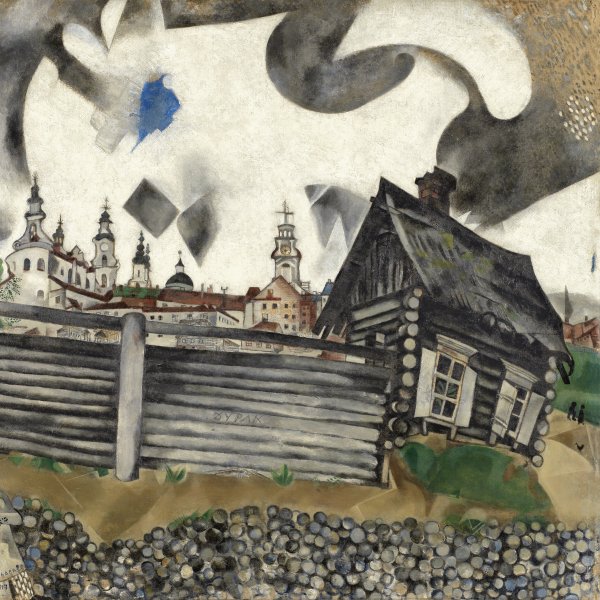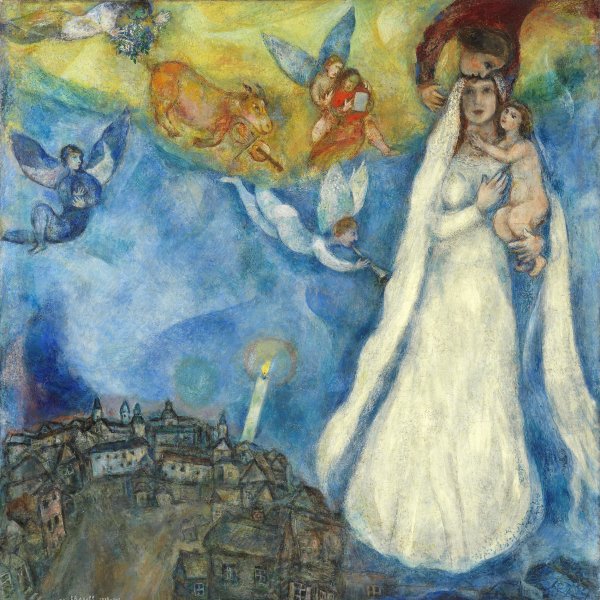The Cock
The first owner of The Cock now in the Museo Thyssen-Bornemisza was the dealer Georges Bernheim, with whom Chagall signed a contract In 1927, marking the start of his unstoppable rise to success. Five years earlier the artist had decided to return to the West after a long spell in Vitebsk and Moscow. First he lived for a time in Berlin, until in September 1923 his poet friend Blaise Cendrars persuaded him to return to the French capital and accept the commission to illustrate Ambroise Vollard’s edition of Gogol’s Dead Souls and La Fontaine’s Fables with a series of prints. The composition of The Cock in the Thyssen-Bornemisza collection is directly related to two of the prints he made for the Fables: The Cock and the Fox and The Cock and the Pearl. These illustrations, on which he began working in 1927, were impeccably adapted to the fantasy and irony of the French writer, whose poems featured heroes from both classical and popular mythology and a whole host of animals who behaved like human beings.
Chagall depicts a loving embrace between the animal and a female figure that is generally identified as a harlequin. The courting theme extends to two other pairs of lovers who embrace in the background. The cockerel held a symbolic meaning for Chagall, for as Franz Meyer pointed out, from early on it “has played a part in religious rites as the embodiment of the forces of sun and fire” and was furthermore a common motif in Russian lubki. Lastly, the resplendent colour, which foreshadows the chemistry of the colour of his final compositions, is, as Susan Compton points out, undoubtedly related to Chagall’s friendship with the Delaunays.
Paloma Alarcó









